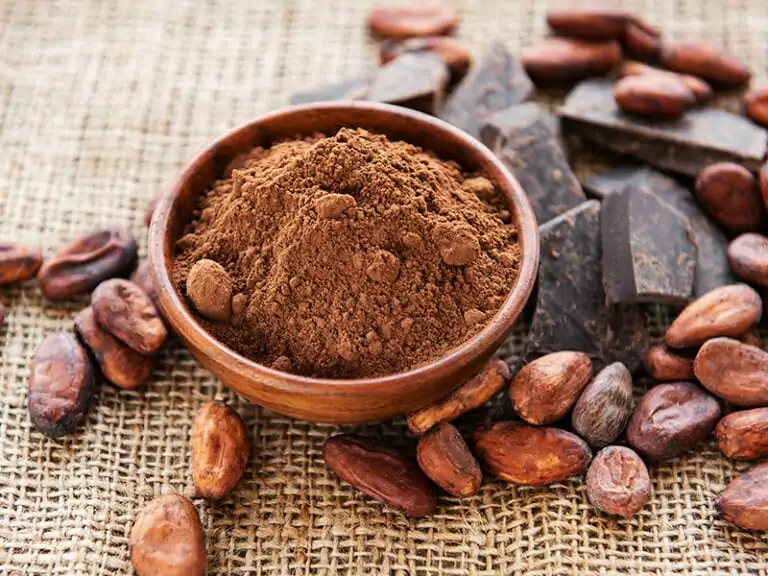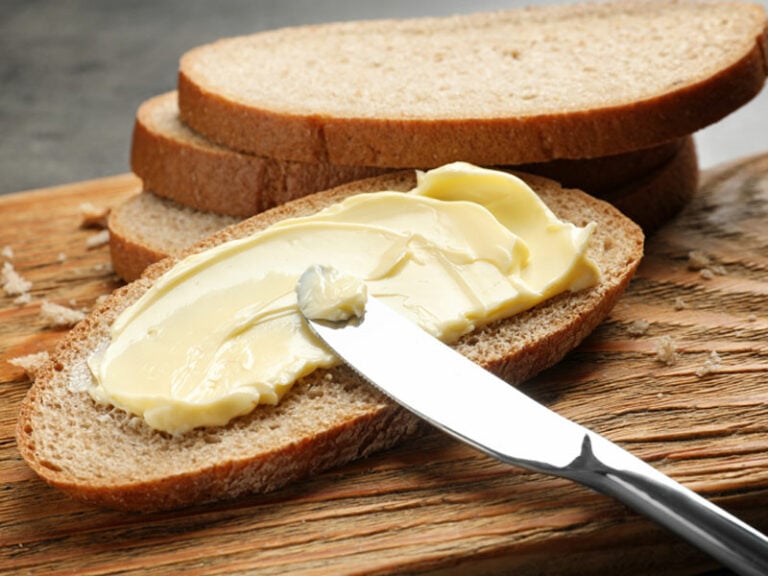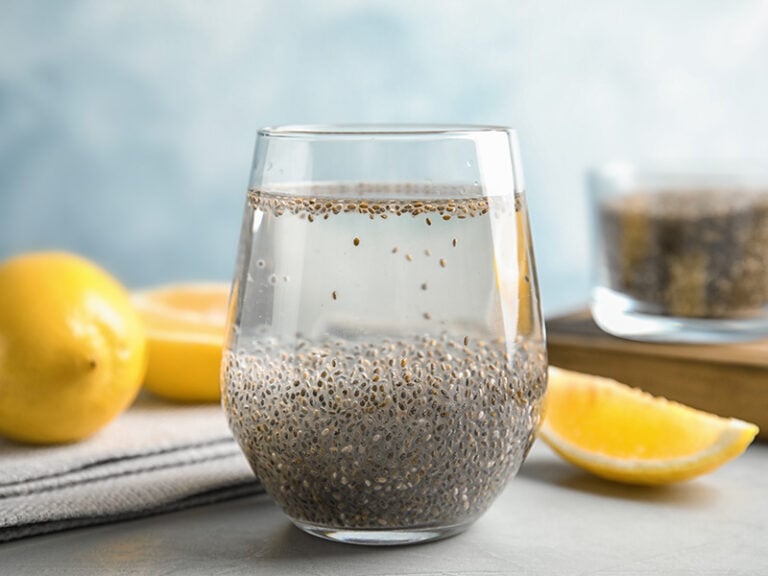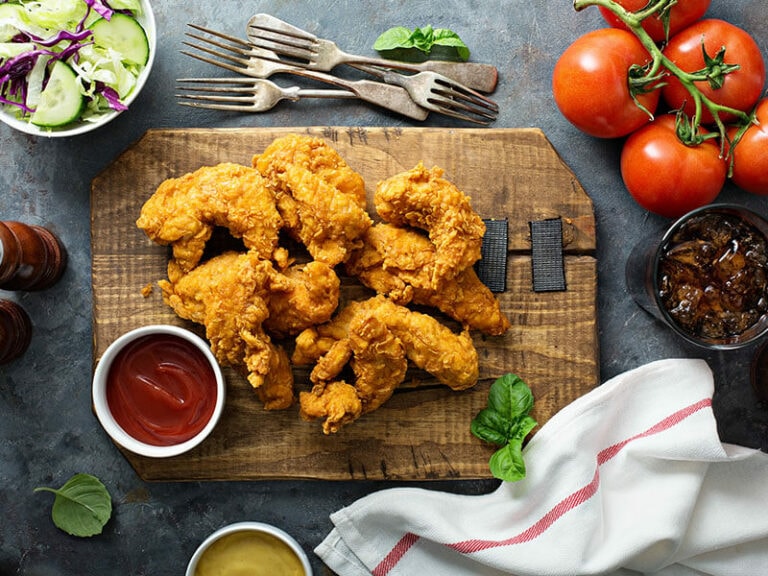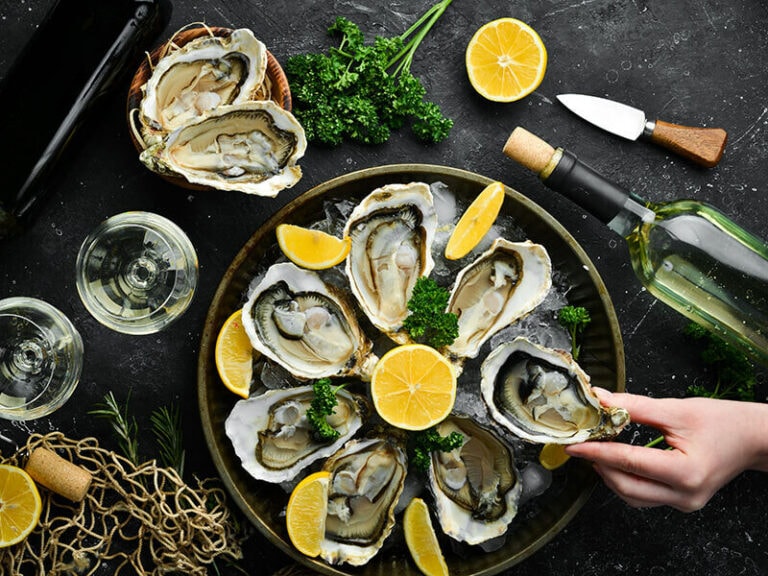What is BYOB? Have you been wondering about this because some of your friends invited you to a BYOB party or restaurant? Indeed, that kind of party is increasingly common these days. However, it may still confuse you, especially if it’s your very first BYOB party.
There is no need for worries. You will find everything you need to dispel this confusion once and for all in this article. On top of that, you can also get some useful tips and advice on preparing for BYOB. Let’s find out together!
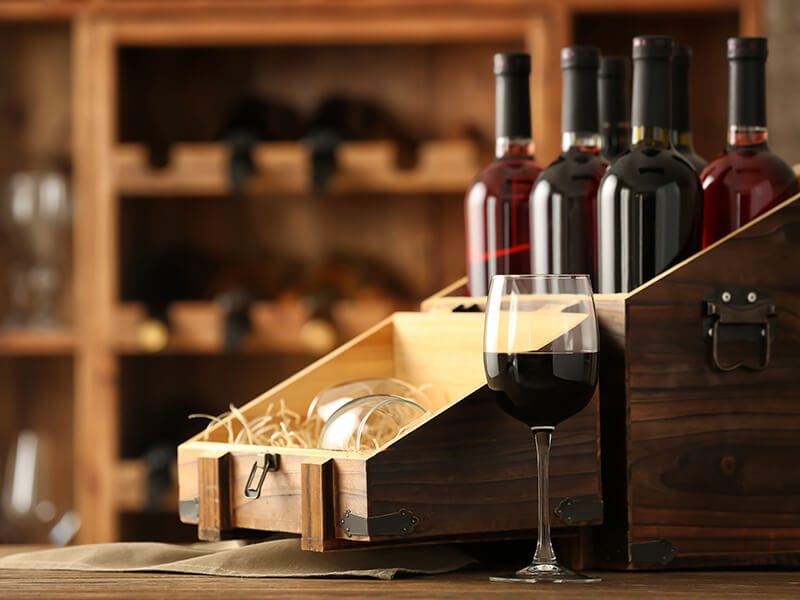
BYOB 101: What Is It?
So, what does it mean anyway?
Occurring occasionally during the 1920s, BYOB was the abbreviation for “bring your own bottle” or “bring your own booze”. Sometimes, the last B was also converted as “beer” or “beverage”. Whatever they are, they all suggest you bring your alcoholic drinks.
Dating back to the repeal of Prohibition in 1993, the Pennsylvania Liquor Control Board was founded to supervise a strict licensing system for selling alcohol. As a result, small, independent restaurants have practiced BYOB to respond to in-demand and pricey licenses.
BYO is another term you may often hear as well. It’s short for “bring your own” and is often used for the same message as BYOB. However, at certain parties or restaurants, you can bring your own meat, seafood, juices, or whatever, aside from wine, beer, or spirits.
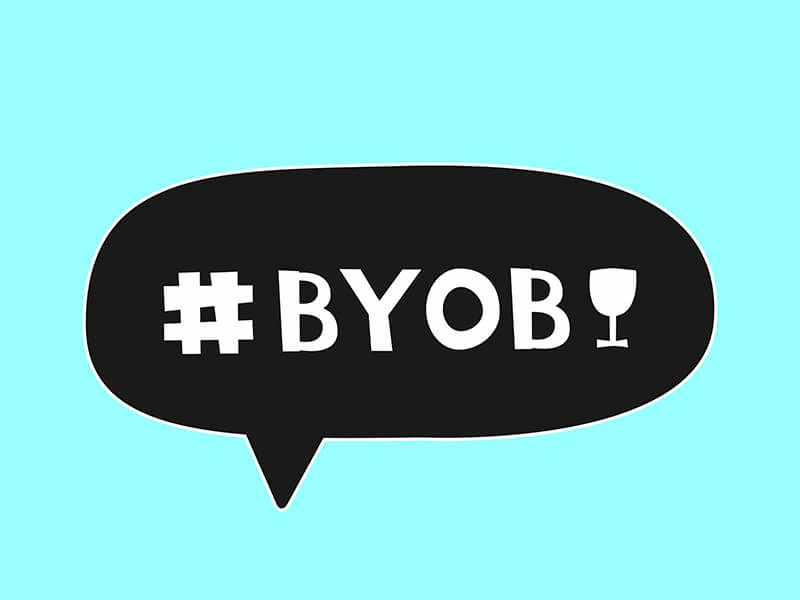
Why Does BYOB Work?
BYOB is commonly used in parties and restaurants. But what makes BYOB increasingly common in these places?
For Parties
Normally, you can see it on certain party invitations, which are called BYOB parties. They are celebrations or social events where the hosts don’t serve alcohol to their guests. In some cases, they may provide a limited amount of alcoholic drinks, which is not enough for guests.
That’s why suggesting people bring their own alcohol is becoming more common. This approach ensures their guests have a satisfying experience with their favorite wine, beer, and spirits.

For Restaurants
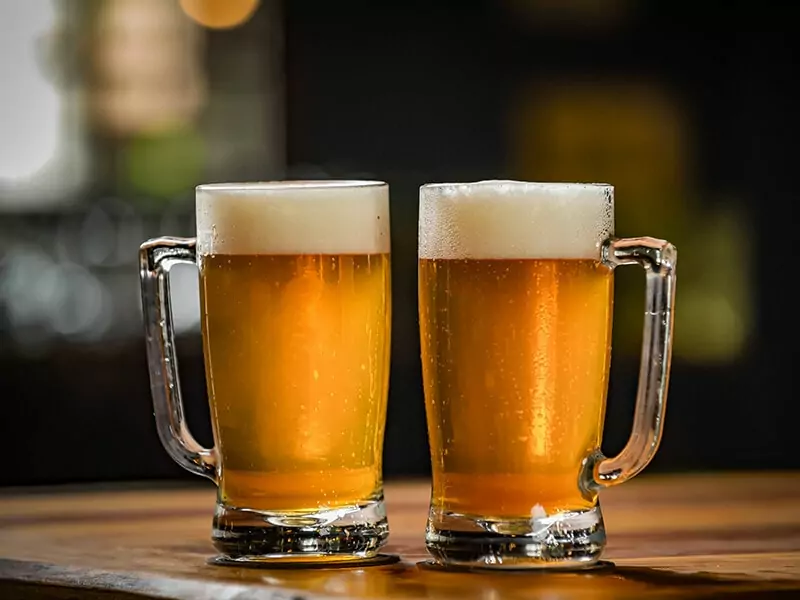
Selling alcohol accounts for the vast majority of restaurants’ profits. But not every establishment benefits from it. This is because restaurants in most states and cities must obtain liquor licenses to sell alcohol legally. Getting them, however, is extremely expensive and difficult.
As a result, some don’t have licenses to sell alcoholic drinks, whereas others have licenses but can only provide a limited range of alcohol. The implementation of BYOB policies enables them to follow local alcohol laws but still attract customers at the same time.
Additionally, several restaurants can provide full alcohol services but still promote BYOB. Some simply want to please their customers, while others take advantage of corkage fees to increase their revenue.
Learn tips and tricks to have a good time at BYOB restaurants.
Some Approaches To BYOB At Restaurants
While implementing BYOB at parties is often flexible and straightforward, practicing it at restaurants is quite complex. These are several policies that establishments tend to apply. For a glance, look at the table below.
Traditional
Customers will bring their own alcoholic drinks along to restaurants. The establishments can then only offer guests glasses and ice (1). Typically, their staff don’t serve or interact with alcohol, like opening alcoholic bottles or pouring the drinks into the customers’ glasses.
In addition, restaurateurs may not allow their guests to bring and consume these beverages at their venues during restricted hours of alcohol sales.
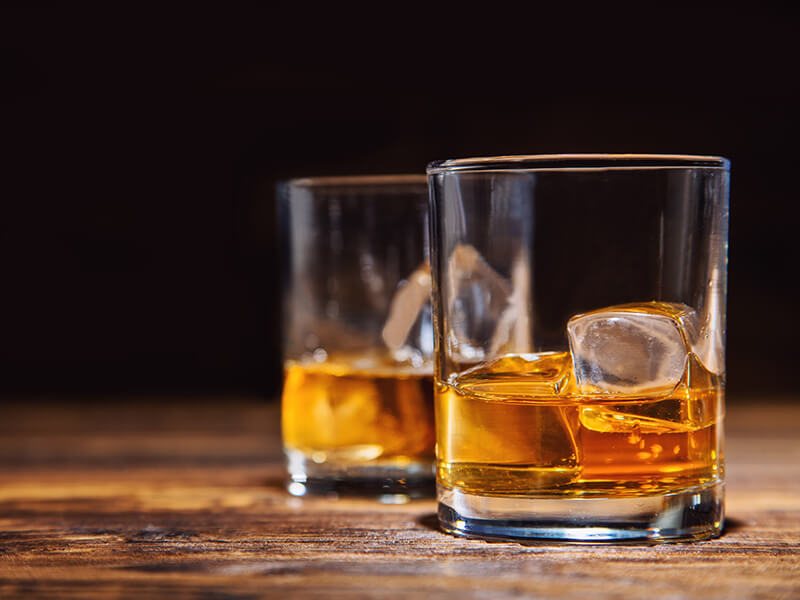
Complete The Drink
In this practice, restaurants provide drinkware and bartending tools like shakers and mixing glasses. Guests can also lay their hands on mixers and garnishes for alcohol, such as salt, juices, olives, maraschino cherries, limes, etc.
This service allows them to personalize and upgrade the flavor of their alcohol. Additionally, they can build their own cocktail at the tables as well.
Master your skills in using bartending tools with this detailed instruction.
Full-Service Optional
Aside from all the things the previous option offers, this practice involves serving alcohol at tables. Staff can help customers open wine, beer, or spirits bottles and pour the drinks into their glasses. After the service, empty bottles are often left at the restaurants.
Full-Service
Another approach is full-service BYOB. This option includes all the services in the full-service optional BYOB. However, guests will hand their alcoholic drinks to the staff as they arrive in this case. After a while, the servers will deliver and pour the alcohol at their guests’ tables.
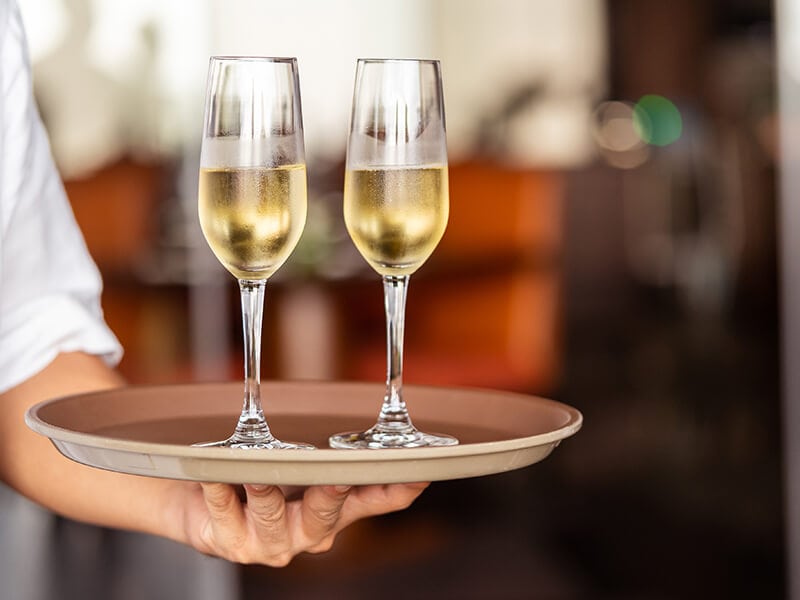
Corkage Fee
A corkage fee itself is not a standalone BYOB approach. When it’s applied, it often comes with one of the other options. Customers will be charged a fee for consuming their alcohol at restaurants.
Corkage fees vary widely from alcohol to alcohol and from restaurant to restaurant. At many establishments, they tend to range from $10- $40 per bottle but maybe more than $100 at high-end restaurants. Some, however, charge their customers fees equal to their cheapest wine.
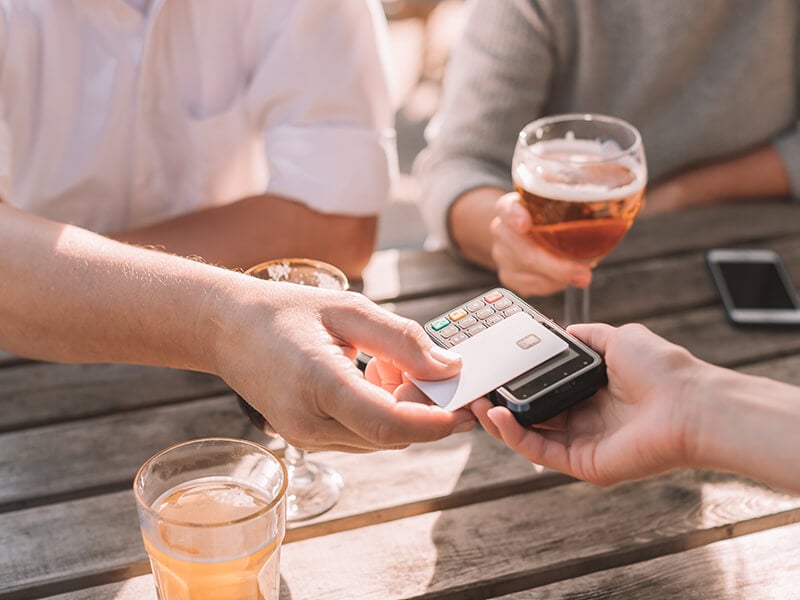
The Pros And Cons Of BYOB Restaurants
The BYOB policy has some positive impacts on businesses; however, it also brings several drawbacks. Let’s examine what they are.
The Pros
In terms of positive impacts, BYOB can benefit restaurants in many ways.
- Ensures customer satisfaction: BYOB enables guests to enjoy their favorite wine, beer, or spirits even if establishments don’t obtain liquor licenses or possess limited licenses. Guests also feel more freedom and comfortable with their choices.
- Draws customers to restaurants: The markups on alcoholic drinks in regular establishments make them way more expensive than typical ones. BYOB restaurants are appealing to guests since they can save lots of money by bringing their own alcohol.
- Increases food revenue: Customers who come with their own alcoholic beverages tend to spend more money on food at restaurants than usual.
- Spends fewer resources: BYOB establishments don’t often need liquor bars and wine rooms. As a result, restaurateurs can invest that money and space for other essential aspects of their businesses. Their staff can also save lots of management time.
- Keeps up with other competitors: BYOB establishments are increasingly common. Restaurateurs will not want to miss out on the trend just because they don’t offer BYOB. But, if they are the only BYOB in their area, they will stand out among competitors.
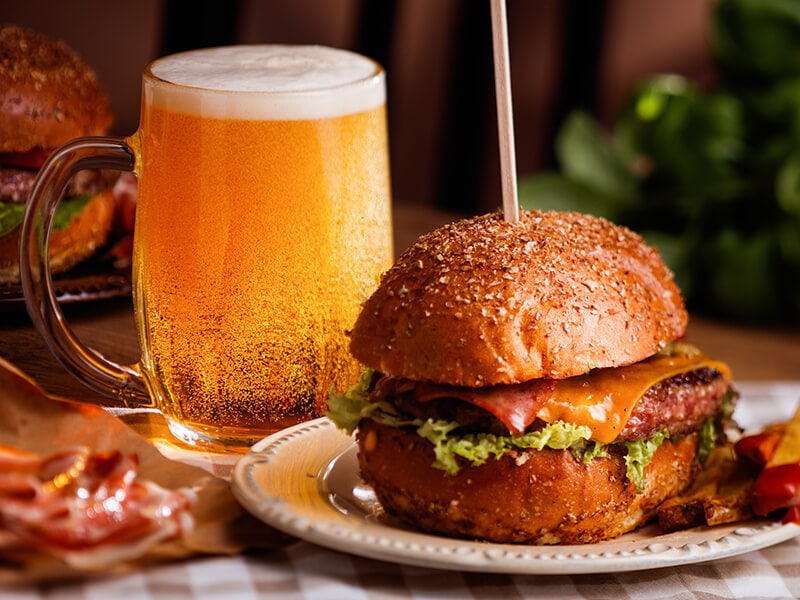
The Cons
Apart from the advantages mentioned, BYOB also has some drawbacks for restaurants.
- Loses an enormous potential profit: Establishments selling alcohol may experience revenue losses from offering BYOB. Allowing customers to bring their own alcoholic drinks will likely decrease the sales of restaurants’ wine, beer, and spirits.
- Slow table turnover: Guests who order a few wine glasses often leave after clearing their plates. However, those who bring their own alcohol may continue enjoying their bottles for a while more. As a result, the slow table turnover can lead to profit losses.
- Meets difficulties in selling restaurants: Business people prefer restaurants with full liquor licenses. BYOB establishments, by contrast, often don’t obtain liquor licenses. It means they may be less appealing to the eyes of buyers on the market.
- Receives complaints about corkage fees: Restaurants charge customers different rates. As a result, guests may complain about corkage fees at one establishment compared to another.
- Has responsibility for drunk customers: Guests may bring more alcoholic drinks than usual because they are way cheaper than buying at restaurants. For this reason, they may overdrink and cause some trouble to themselves and others around them.
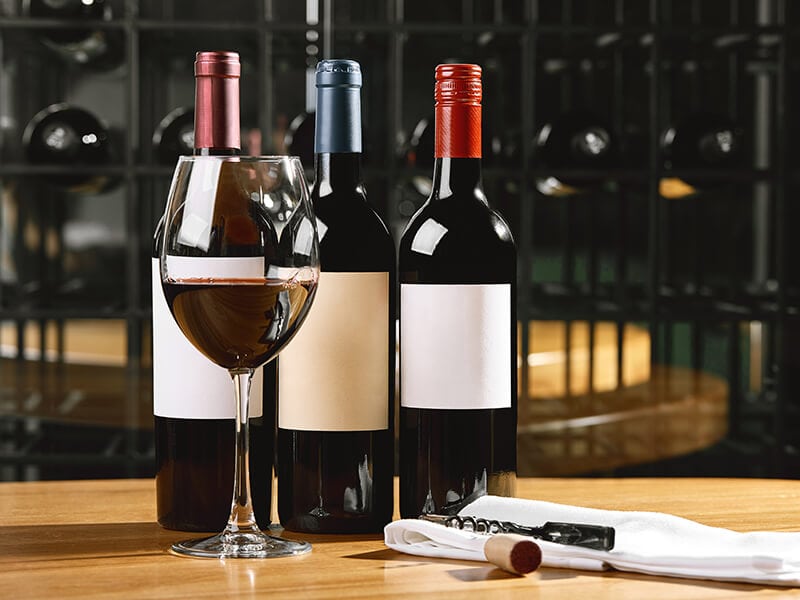
Tips For BYOB Restaurants
For restaurateurs who want to offer BYOB at your venues, here are some valuable tips you should consider.
- Check your local alcohol laws meticulously: The laws for alcohol restrictions vary significantly from state to state and city to city. Some regions don’t require liquor licenses to offer BYOB, others do require them, yet others still ban it.
- Get liquor liability insurance: Over-drinking may lead to several troubles, such as fighting, property damages, and drunk driving. Having liquor liability insurance can help you cover potential damages caused by drunk customers.(2)
- Decide corkage fees: In case you want to offer corkage fees, decide how much you will charge your customers. Because if the fees are noticeably more expensive than those of your competitors, you will likely lose many customers.
- Promote some free corkage fee days: This is a great idea to attract more customers. For example, you can charge no fee for their first alcoholic bottle. Another way is to implement it once or twice every week. Special occasions are also ideal for implementing the BYOB policy.
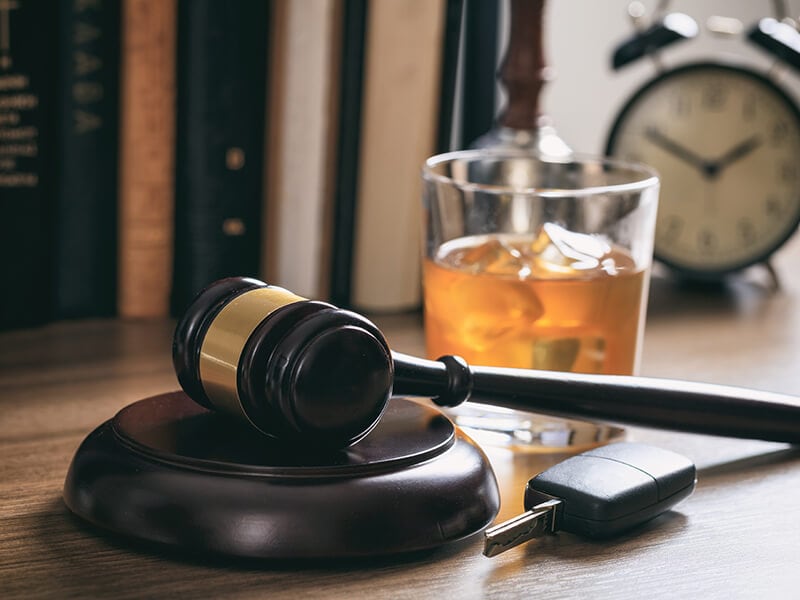
Tips For Guests To BYOB Parties Or Restaurants
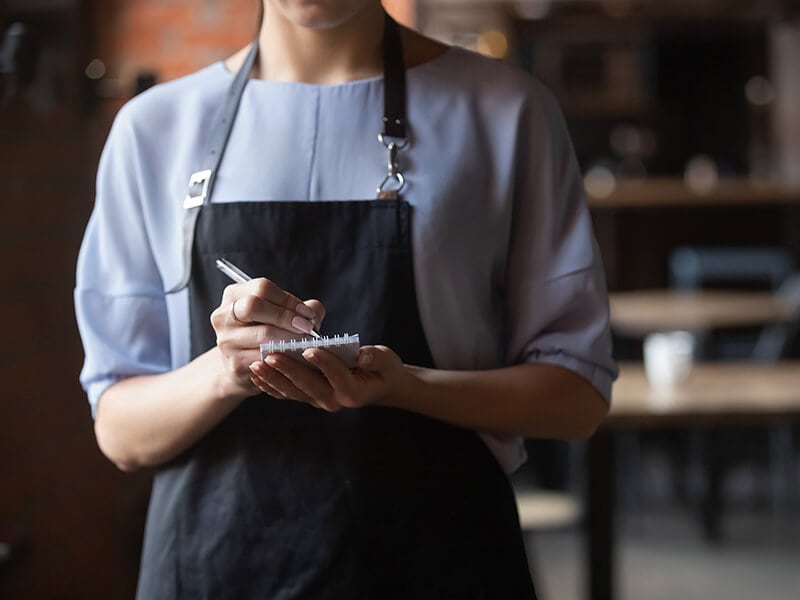
For guests going to BYOB parties or restaurants, you should look at the following tips.
- Call ahead: Many parties or restaurants have some rules for specific types of alcohol. For example, some may allow you to bring wine or beer but not spirits. Therefore, make sure you call them in advance to get more information and prepare fully.
- Ask for suggestions from the hosts or staff: If you have no idea what food or beverages will go best with your alcoholic drinks, you can ask for advice from the hosts or staff. They understand their menus and may have some experience in handling this.
- Share with others: When you bring your favorite alcohol, mixers, and garnishes to the BYOB parties, how about sharing them with other guests too? You and they can build superb cocktails and share the taste as well.
- Tip well: Although you may be charged some amounts of corkage fees at restaurants, it doesn’t mean you shouldn’t tip their staff. You can tip them generously if you find their services excellent and helpful.
- Don’t overdrink: While you are free to bring your alcoholic beverages, you should drink in moderation and stay in control. Respect the hosts, restaurateurs, and staff.
- If you are drunk, call a taxi: In case you are drunk, don’t drive home by yourself. It’s dangerous not only to yourself but also to others on the streets. Let a taxi driver drive you home instead.
The guidelines you should take a look at before bringing your bottles to BYOB restaurants.
FAQs
While the article covers almost everything about BYOB, there are still other relevant questions you should take a look at. Let’s check them out!
Go With Your Best Alcohol Friends!
I hope now you have already got all the essential information about BYOB. I also provided tips and suggestions to make your next BYOB party more satisfying. Full preparation is the key to a great and memorable party.
So, what alcoholic drinks will you bring to the next BYOB party or restaurant? Leave your thoughts in the comment section below to let me and other BYOB fans know. Don’t forget to share the article with inexperienced BYOB friends to help them out.
References
- Alcoholic beverage control handbook – government of New Jersey (no date).
- Liquor liability insurance (no date) Cornerstone Commercial & Personal Insurance Services.

